- updated 7th/11th/13th/16th/23rd/29th March/11th April/1st/27th May/
6th July/2nd August/4th December 2009
Theme: Peak Oil, the Transition
Movement....
- and
how to turn a bramble-infested
wilderness into a vegetable garden!
PART 4: Preparation and Planting
23rd March: I've now split this up into several pages as there are so
many images!
Quick links to the other parts:
1. Peak Oil
&
the Transition Movement 2. Garden Clearance 3. Garden
Rebuilding
4. Garden
Planting 5. Garden
growing 6. The Harvest
BACK
TO WEATHER-BLOG MENU
New!
Fine Art Prints & digital images for sale-
Welsh Weather
& Dyfi Valley landscapes Slide-Library - Click HERE
|
March
11th
saw us setting off to a nearby farm with a large trailer, picks
and shovels. The scene for the action was an old barn, floored to a
depth of 1ft or more with ancient dung that we were to clear.
The
muck
was stratified - testimony to the three decades or more of lambing
that had gone on. The dry top layer was so hard that great slabs of it
came up, resembling chipboard, and resisting blows from the pick......
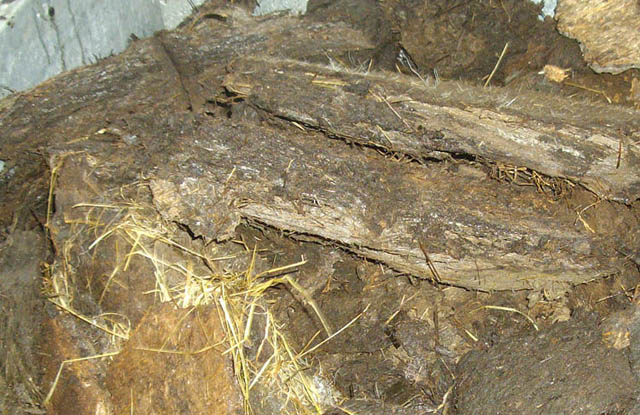 It was a well-loaded trailer that set off back through the drizzle towards Machynlleth...... 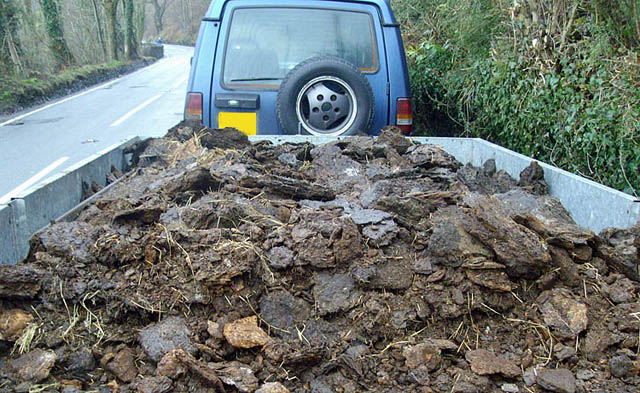 Unloading involved shovelling the stuff into a plastic dustbin and carrying it halfway up the garden to a convenient storage-area. Taking it in turns to carry ten loads and to load the bin, we finished the task after a total of 40 loads of ~60lbs, which takes the weight to just over a ton. 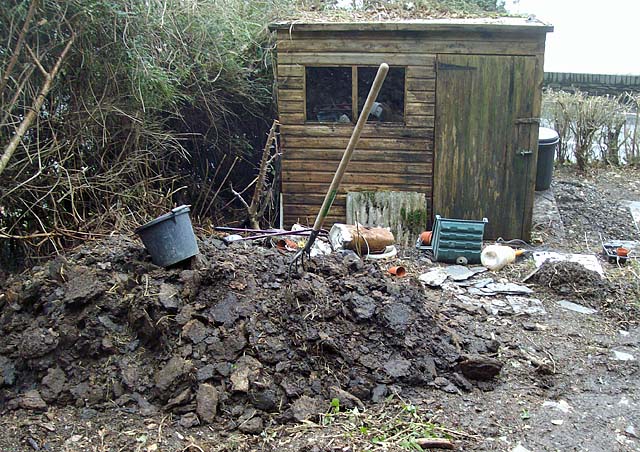 Following washing/changing, the first pint that evening was especially tasty! UPDATE 23rd MARCH 2009 Another handy composting or mulching thing is seaweed. Slugs hate the salt, I have been told - so long as you don't smother plants with the stuff! Weed is a complete pain in the neck if you are fishing on local beaches, draping itself on your line and leaving a great mass to be pumped in (cheaper than joining a Gym though!!). At low tide, there's usually plenty to be found washed up on local beaches and as I was near the coast on the 21st I made a quick detour to pick up a couple of boxfulls: 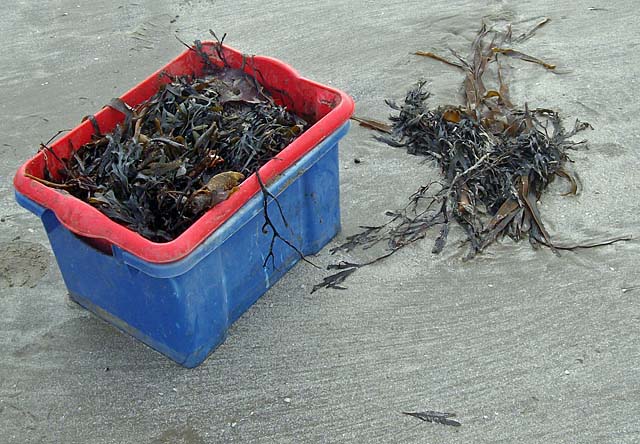 That evening, I arranged the seed-potatoes for chitting, when the sprouts start to grow. L = Pink Fir Apple, R = Charlotte, half and half in the middle. These'll be ready to go in in a while! 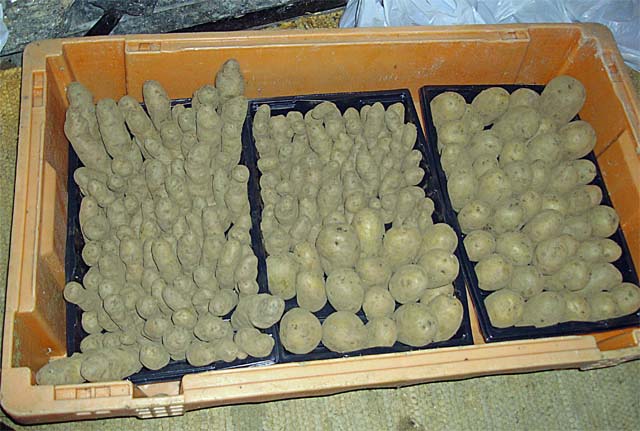 On the 22nd I planted shallot and garlic sets..... I used an old ice-axe to pop the holes in for the sets - extremely handy tool for the job! 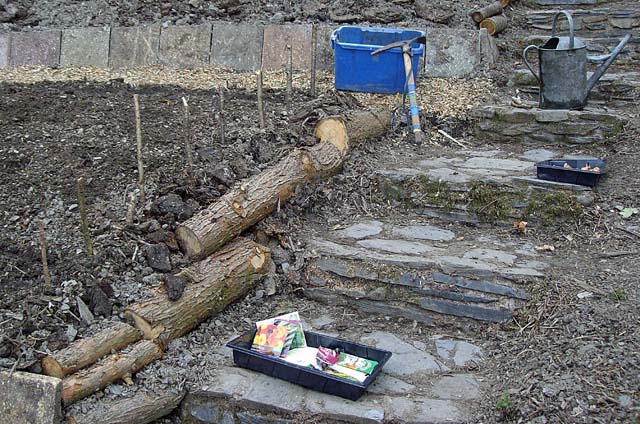 Completed bed - 2 x Spring Onions (seed); 1 x Garlic; 5 x Shallots; 1 x Radish (seed). Now it's up to Nature! 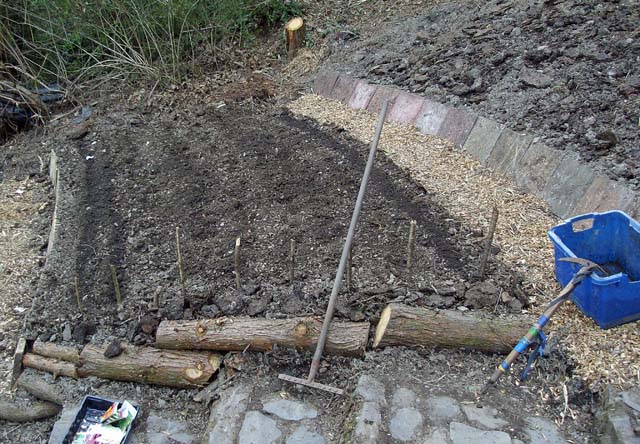 The bed above was always going to be a headache due to its 40-degree gradient! I had considered planting a few big bushy things in it, but we had bought so many seed potatoes, something would have to be done with it this year..... 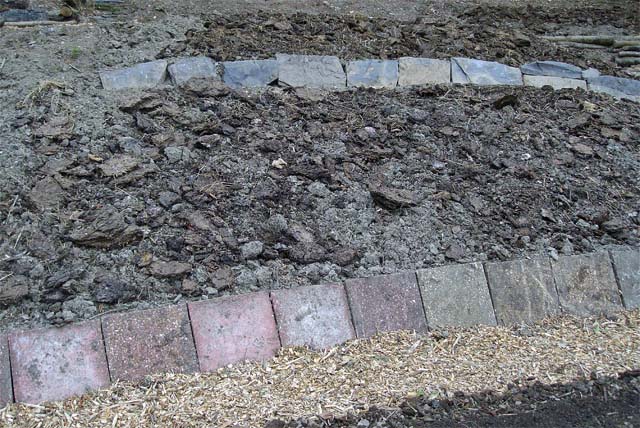 In the end I divided it up into 4 terraces. 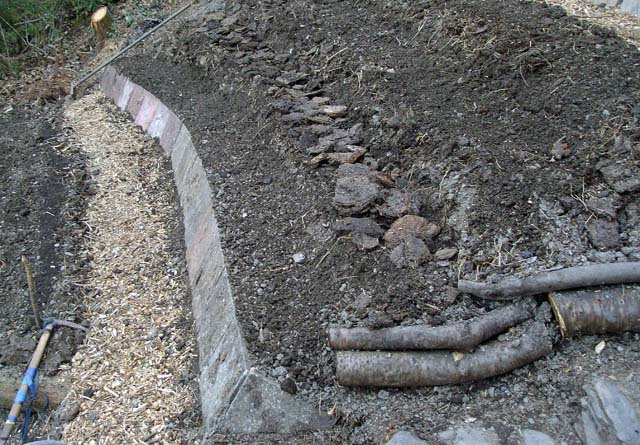 Above again, the top bed was made fairly level by raising its front using a few logs: 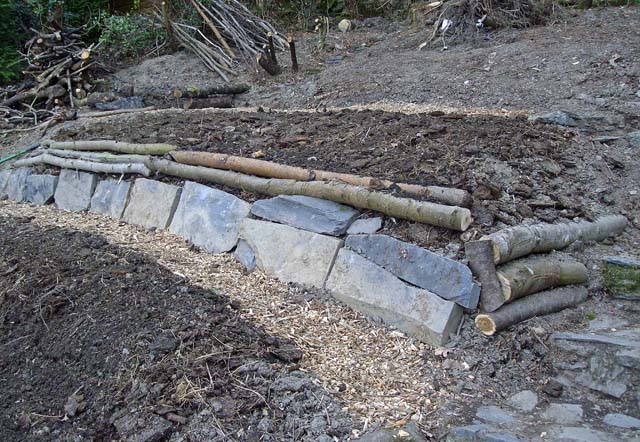 Here's a quick tot-up of time spent and fuel consumed up to March 23rd: 16 round trips from home to the garden = just under 20 miles. This was because a lot of heavy tools were taken to and from there each time during the early stages. The manure-gathering trip = 16 miles Diversions to pick up seaweed and woodchips add up to less than 5 miles. Total = just over 40 miles or less than two gallons of diesel (I get 50mpg from my vehicle - not sure what my mate's Discovery does) Petrol consumed by chainsaw: approximately one gallon Man-hours: approximately 70 Ongoing and still conclusive proof that the main energy input has been of a muscular nature!! On the 24th I went fishing - look at the weed washing ashore! 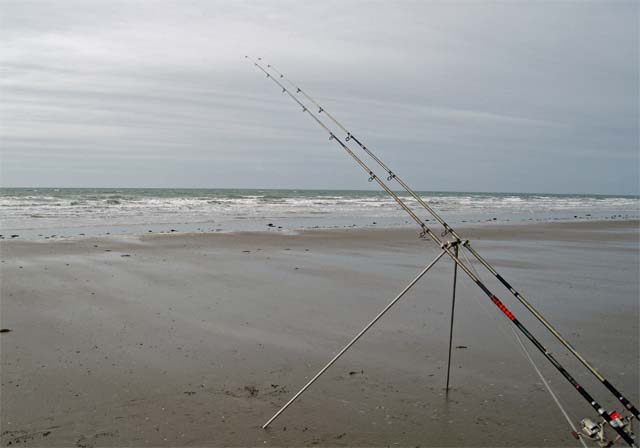 Bites were not forthcoming - it's still rather early in the season, but it starts anytime now! So I gathered some more weed as the waves rolled it along to me: 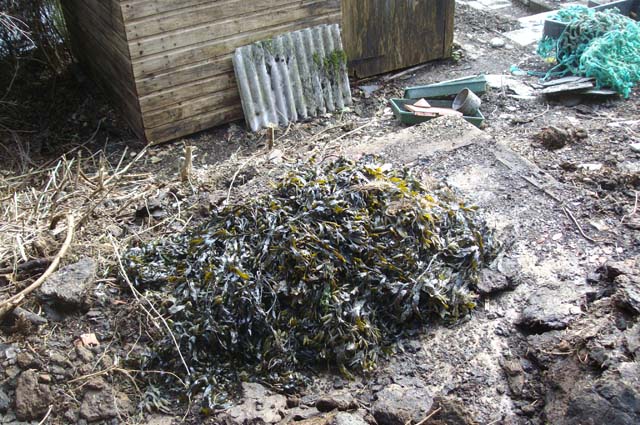 UPDATE 11th April 2009 Having been away for a week in which the weather warmed up, I was still surprised to come back to a growing garden. The garlic has taken the lead, some shooting up five inches in a few days.... 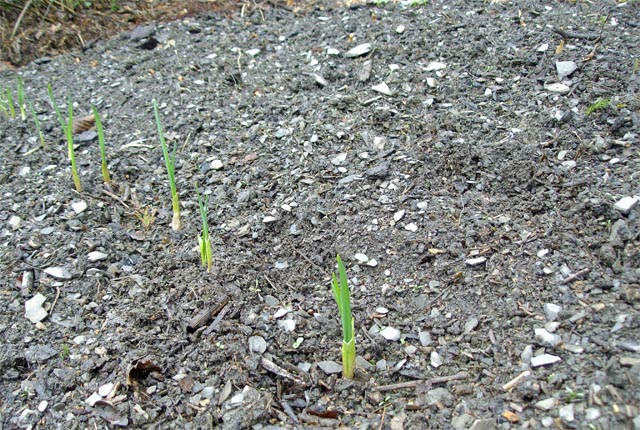 ....but also lots of little seedlings are appearing everywhere! This is what happens when sunlight reaches soil that has been hidden under dense brambles for years. I shall take care to identify what these various seedlings turn into and decide their fate accordingly. In places there are certainly acorns "hatching out" and I'll transplant them to the sides of the garden where there are obvious gaps. I'll only root out stuff if it is a potential nuisance: if there are any useful herbs or insect-beneficial plants I will leave them wherever possible. 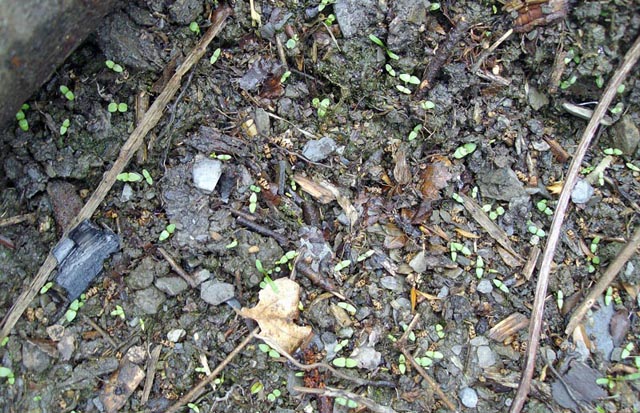 April 11th saw the potatoes go in: I had fears we'd overdone it on the seed-potato purchase.... 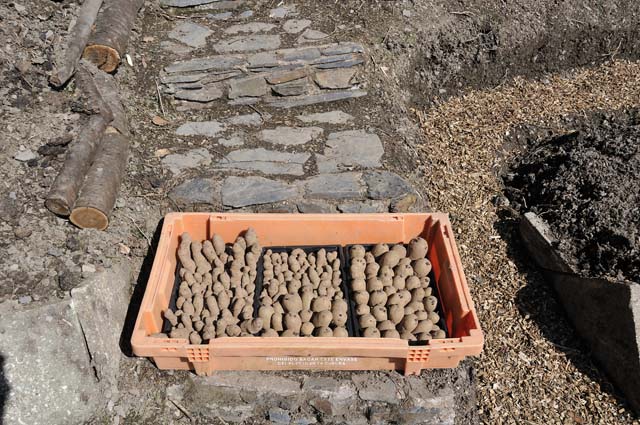 ...justifiably! These are what are left. Lesson learned: there are lots of Pink Fir Apples to the kilo! I've even planted three rows in the un-dug, unmanured thin soil above the top bed seen here. It will be interesting to see how they do, by comparison with the pampered ones further downhill!  Also in, via Suffolk Seeds, are Spinach Beet, American Cress and Crimson Clover - the last ordered as a "green manure" crop for next winter, but as it is a very powerful bee-attractor, I've sown it in patches here and there, and especially down either side of the garden. It's always important to attract beneficial insects (both pollinators and predators). Today I had some colourful visitors in the shape of three different butterflies - Orange Tip, Small Tortoishell and this Comma: 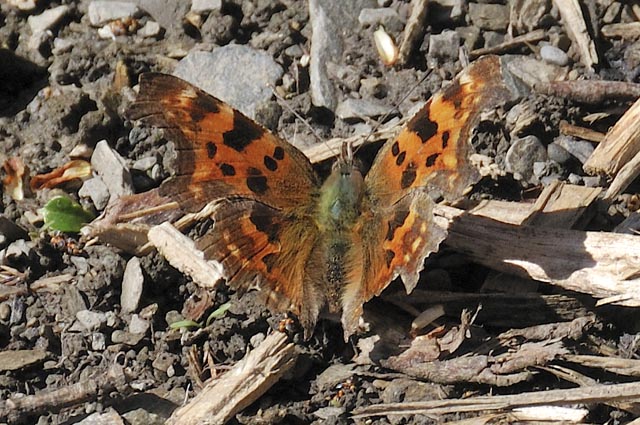 They seem to like the sunny sheltered aspect of the place! UPDATE 1st May 2009 Planting continues apace: the need for some bean-sticks saw me attack one of the sycamores on April 13th. Only keeping them for timber - non-indigenous rubbish otherwise! 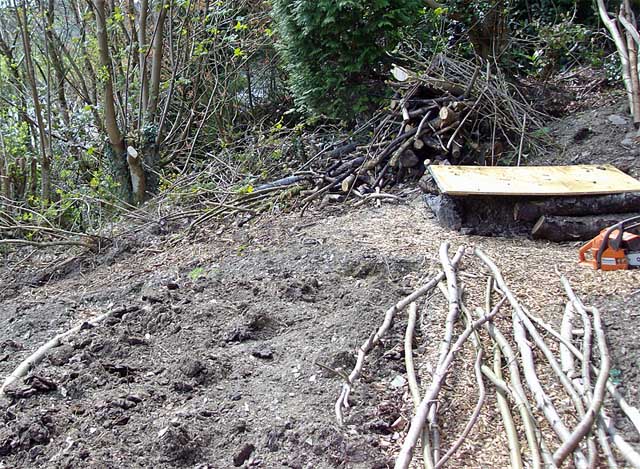 ....and the job completed!  More seeds are being planted: runner beans, purple-sprouting broccoli and leeks in pots at home and a mixture of well-known and obscure things directly into the soil: 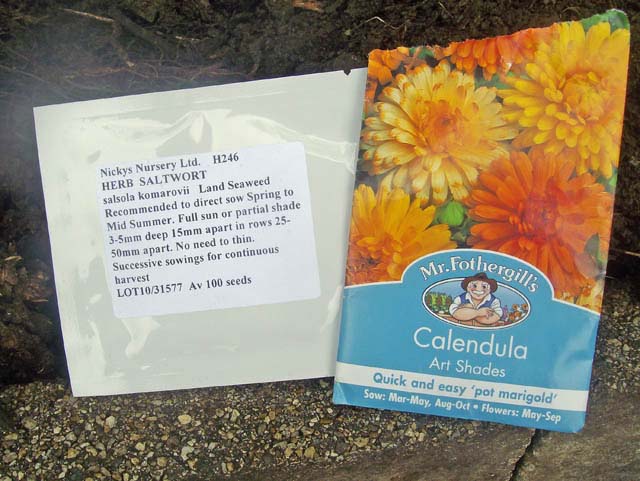 Land Seaweed is supposed to taste a bit like Marsh Samphire! Calendula attracts bees and has uses in herbal medicine too.... as is Echinacea - I had a good deal from the plant stall at Machynlleth Market with a big potful for a couple of quid so that's got a head-start! Still need to be careful though - this was the frost on a nearby verge on Easter Sunday, April 12th: 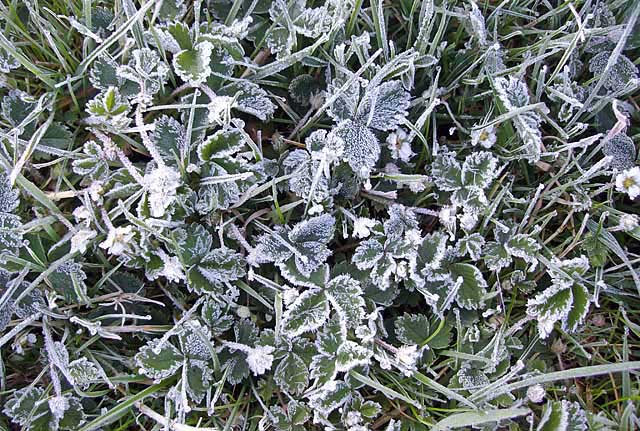 Next part: How did the garden grow? Read more.... 1. Peak Oil &
the Transition Movement 2. Garden Clearance 3. Garden
Rebuilding |
|
BACK TO WEATHER-BLOG MENU New! Fine Art Prints & digital images for sale- Welsh Weather & Dyfi Valley landscapes Slide-Library - Click HERE |